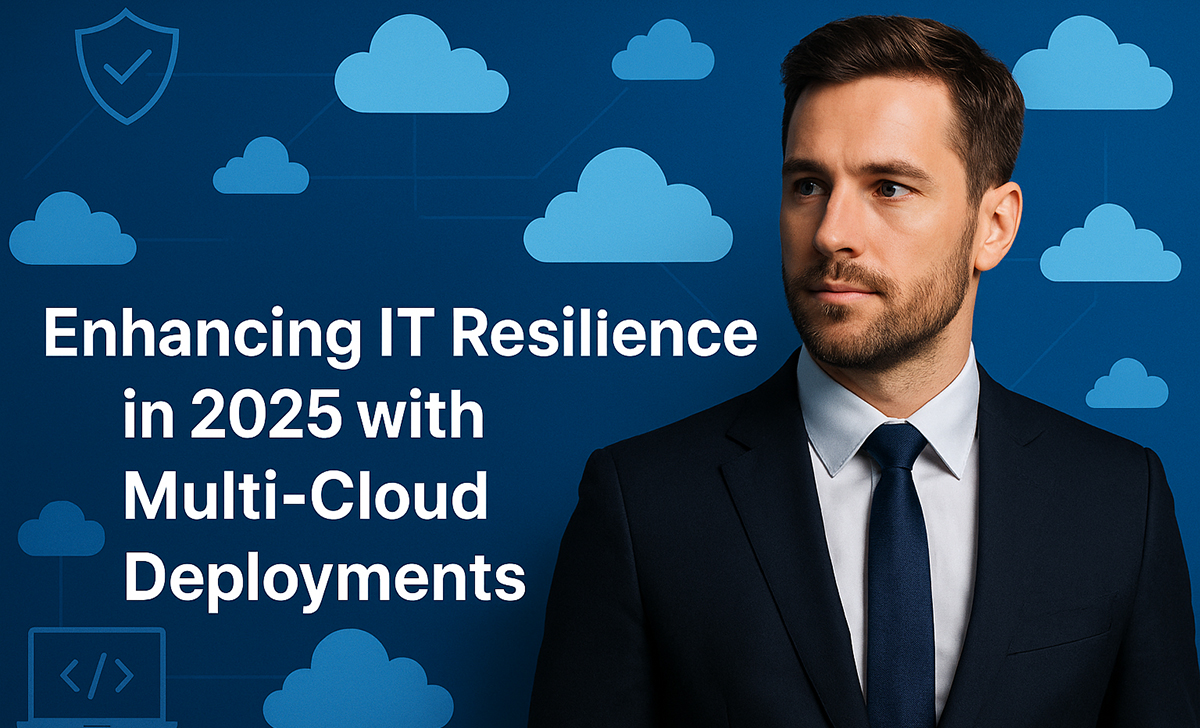No products in the cart.
 The Ultimate Guide to Multi-Cloud Success in 2025
The Ultimate Guide to Multi-Cloud Success in 2025
In today’s dynamic cloud computing environment, adopting a multi cloud approach is increasingly vital for organizations striving for adaptability and robustness. As organizations increasingly move toward digital transformation, the demand for robust, scalable, and resilient IT infrastructure continues to grow. Multi-cloud strategies allow businesses to leverage the strengths of multiple cloud service providers while mitigating risks associated with vendor lock-in and downtime.
Why Multi-Cloud Strategies Are Crucial in 2025
The modern IT ecosystem is dynamic, complex, and more interconnected than ever. As cloud technology advances, relying on a single provider is no longer a viable option for many enterprises. Multi-cloud strategies offer several key advantages that directly impact flexibility and resilience.
Primarily, utilizing multiple cloud platforms enhances overall service reliability by reducing dependence on a single provider. Distributing workloads across multiple environments enables organizations to maintain operational continuity, even if one platform experiences a failure. Such redundancy is essential for ensuring resilience against unforeseen outages.
Adopting a multi-cloud approach also enables organizations to optimize costs through flexible resource allocation and vendor diversification. Organizations can strategically allocate resources based on the strengths of each provider, taking advantage of competitive pricing and reducing operational expenses. Moreover, having a multi-cloud strategy enables businesses to access unique features from each provider, resulting in a more flexible infrastructure.
Flexibility and resilience also stem from the ability to seamlessly transition workloads between cloud environments. This agility is essential in a world where regulatory requirements and performance demands are constantly changing. A well-executed multi-cloud strategy ensures that data remains accessible and secure, regardless of geographical or technical challenges.
Implementing Effective Multi-Cloud Strategies
Successful multi-cloud adoption requires careful planning and execution. One of the most critical steps is to develop a comprehensive cloud management strategy that integrates seamlessly with existing IT workflows. Businesses should assess their requirements, pinpoint core applications, and select the most suitable cloud environments for each function.
Security is a fundamental aspect of multi-cloud management. Organizations must adopt robust security protocols and implement identity and access management (IAM) policies across all cloud platforms. This approach minimizes vulnerabilities and ensures consistent data protection across environments.
Performance monitoring is equally important. Real-time tracking of workloads and data flows helps maintain optimal cloud performance, particularly when resources are dynamically allocated across multiple environments. Businesses should leverage automated monitoring tools to identify performance bottlenecks and take proactive measures.
Another crucial element is data interoperability. Organizations must ensure that data can move seamlessly between cloud environments without compatibility issues. Investing in cloud-native applications and platforms that support open standards can significantly enhance multi-cloud flexibility.
Overcoming Challenges in Multi-Cloud Adoption
Despite its benefits, cross-cloud adoption comes with challenges. Managing disparate environments requires expertise and robust cloud governance frameworks. To mitigate risks, businesses should invest in staff training and upskilling, ensuring that IT teams are proficient in managing complex cross-cloud infrastructures.
Compliance is another critical factor. Each cloud provider may have distinct compliance standards, making it crucial to maintain consistent data governance across platforms. Integrating compliance automation tools into the multi-cloud strategy can streamline audits and reduce the risk of violations.
Real-World Applications of Multi-Cloud Strategies
Many leading organizations have already reaped the benefits of multi-cloud adoption. For instance, e-commerce giants leverage multi-cloud architectures to handle variable traffic loads, ensuring resilience during peak shopping seasons. Similarly, financial institutions use multiple clouds to meet regulatory compliance while optimizing data processing speeds.
Future Outlook: Cross-cloud in 2025 and Beyond
As cloud technology continues to advance, multi-cloud strategies will increasingly become indispensable. Emerging technologies such as edge computing and serverless architectures are set to further advance organizational flexibility and resilience. Enterprises that embrace a forward-looking strategy will be well-equipped to manage the complexities of today’s IT environment.
In conclusion, implementing multi-cloud strategies in 2025 has become an essential requirement for organizations seeking enhanced flexibility and operational resilience. By capitalizing on the unique strengths of various cloud providers, organizations can establish robust, adaptive infrastructures capable of enduring the complexities of the digital age.
☁️ Stay Ahead in the Cloud Game – actsupport ensures your infrastructure is secure, optimized, and always available.
Stay updated! Follow us on social media! Facebook, Twitter, LinkedIn
Check out our newest blog entry (How actsupport turns Expectations into Results)
Subscribe to get free blog content to your Inbox



 The Ultimate Guide to Multi-Cloud Success in 2025
The Ultimate Guide to Multi-Cloud Success in 2025